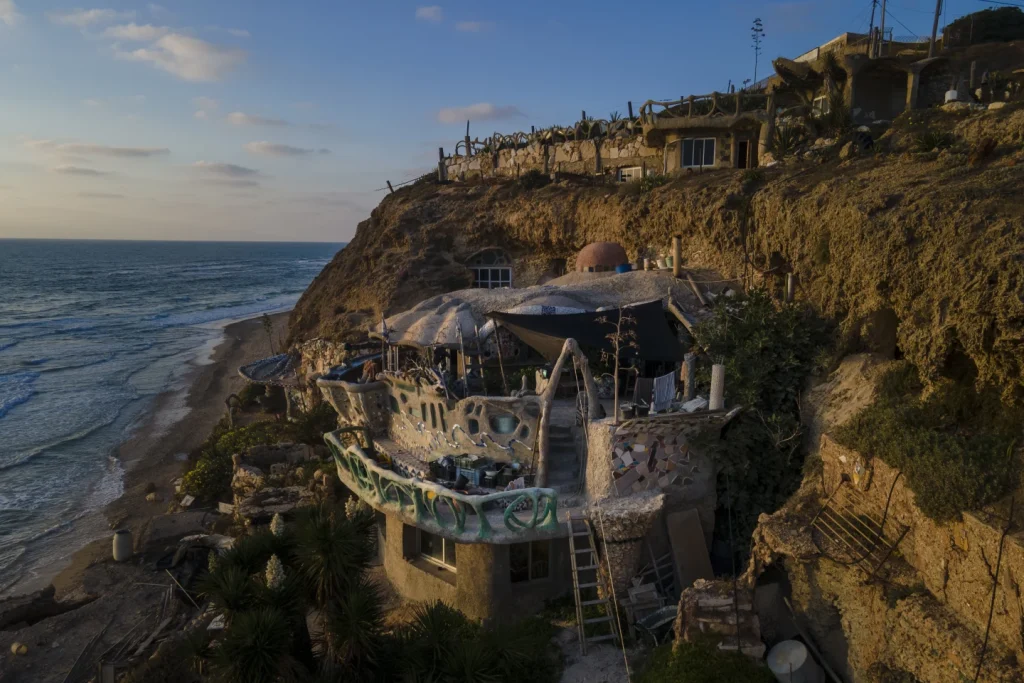The story of Nissim Kahlon and his underground labyrinth in Herzliya, Israel is a fascinating one. For over 50 years, Kahlon has been carving out an intricate network of tunnels, chambers, and staircases in a tiny cave on a Mediterranean beach.
The result is a one-of-a-kind artistic creation that has become a popular destination for local curiosity seekers.
Despite the beauty and uniqueness of Kahlon’s creation, Israel’s government has decided that he must leave. It is unclear why the government wants him out, but Kahlon has vowed to fight the decision.
For many, Kahlon’s underground labyrinth is more than just a work of art. It is a symbol of creativity and individuality in a world that often values conformity over innovation.
Kahlon’s dedication to his craft and his refusal to conform to societal norms have inspired many, and his story has become a source of inspiration for artists and dreamers around the world.
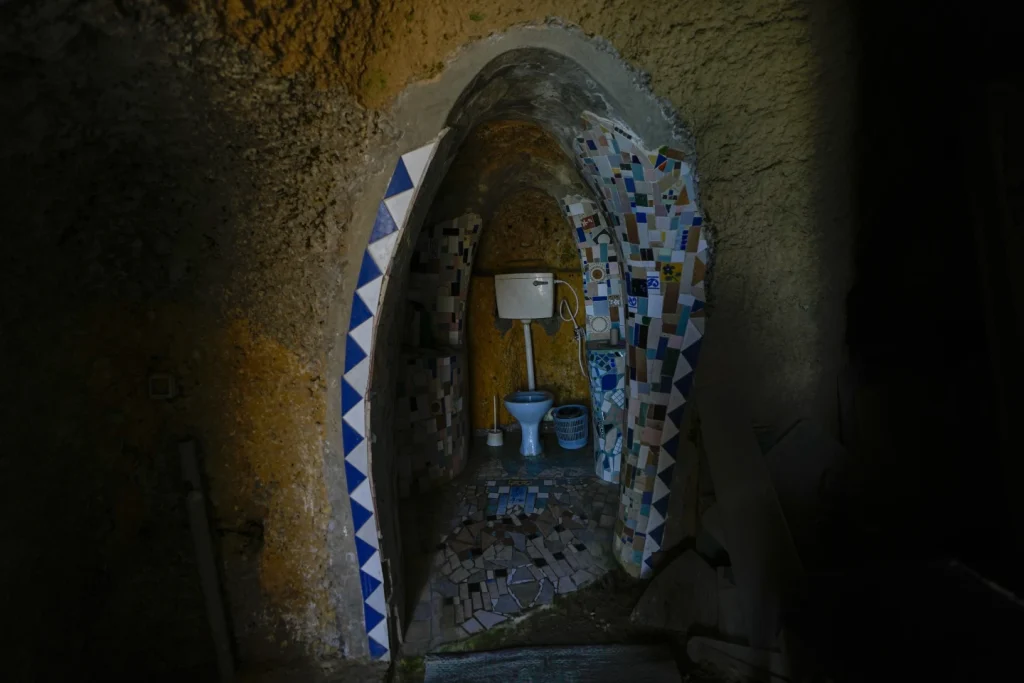
As Kahlon fights to keep his home and his life’s work, many are rallying to his side. They see his struggle as a fight for artistic expression and individual freedom, and they are determined to help him in any way they can.
Whether or not Kahlon is able to keep his underground labyrinth remains to be seen. But one thing is certain: his story will continue to inspire and captivate people for years to come.
The story of Kahlon and his sandcastle home is both fascinating and heartbreaking. For fifty years, he has lived in the structure that he carved out of sandstone cliffs along the Herzliya beach north of Tel Aviv.
But now, the Israeli government has served him an eviction notice, claiming that the structure is illegal and threatens the coastline.
Kahlon’s home is a work of art, filled with recycled materials and elaborate mosaics made from discarded tiles.
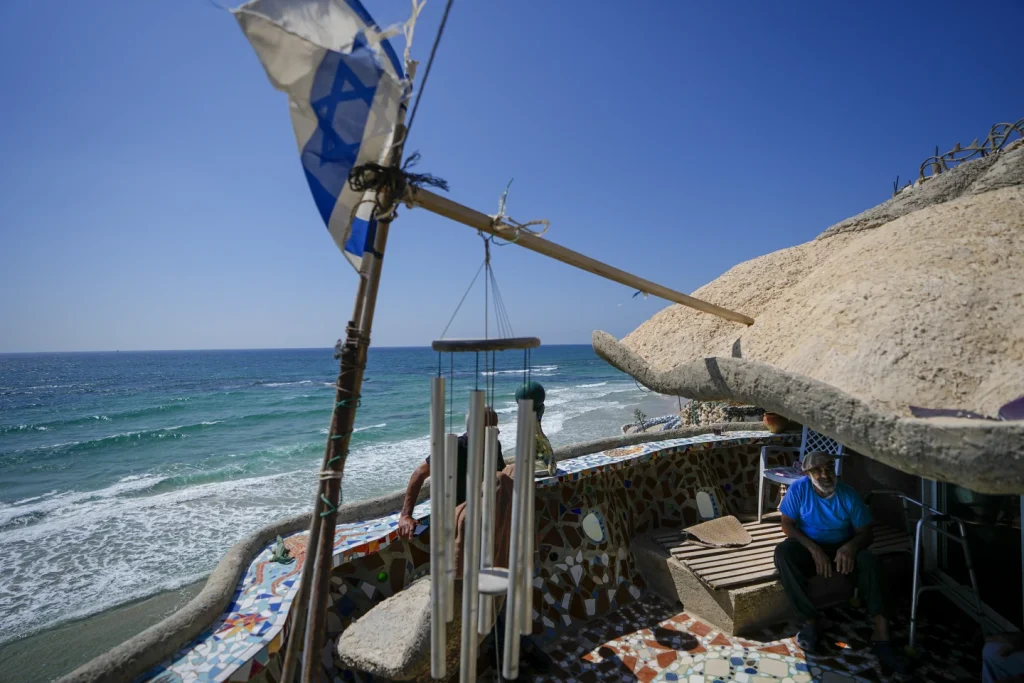
Every surface of his main quarters is covered in these mosaics, and recycled glass bottles serve as decoration and insulation on the exterior walls.
The complex has plumbing, a phone line, and electric lighting in its many rooms.
But despite the beauty and ingenuity of Kahlon’s creation, the government insists that it must be demolished.
Kahlon is devastated by the news, feeling that instead of encouraging him, the government is denigrating him.
For Kahlon, his home represents a lifetime of hard work and creativity. He began living in a tent along the beach in 1973, slowly carving out a cave in the sandstone cliffs.
Over time, his simple hole in the wall turned into a labyrinthine complex filled with chambers of different design and purpose.
Kahlon insists that his construction is sturdy and that he has not harmed the coastline. He uses only materials that he quarries himself and recycles everything he can. For him, there is no waste, only material.
It is a heartbreaking situation for Kahlon and his sandcastle home. The government may see it as a threat to the coastline, but for Kahlon, it is a work of art and a testament to his creativity and resourcefulness.
The story of Amos Kahlon and his cave home on the outskirts of Herzliya has captured the attention of many in Israel. Kahlon claims to have received a demolition order back in 1974, but it was never carried out.
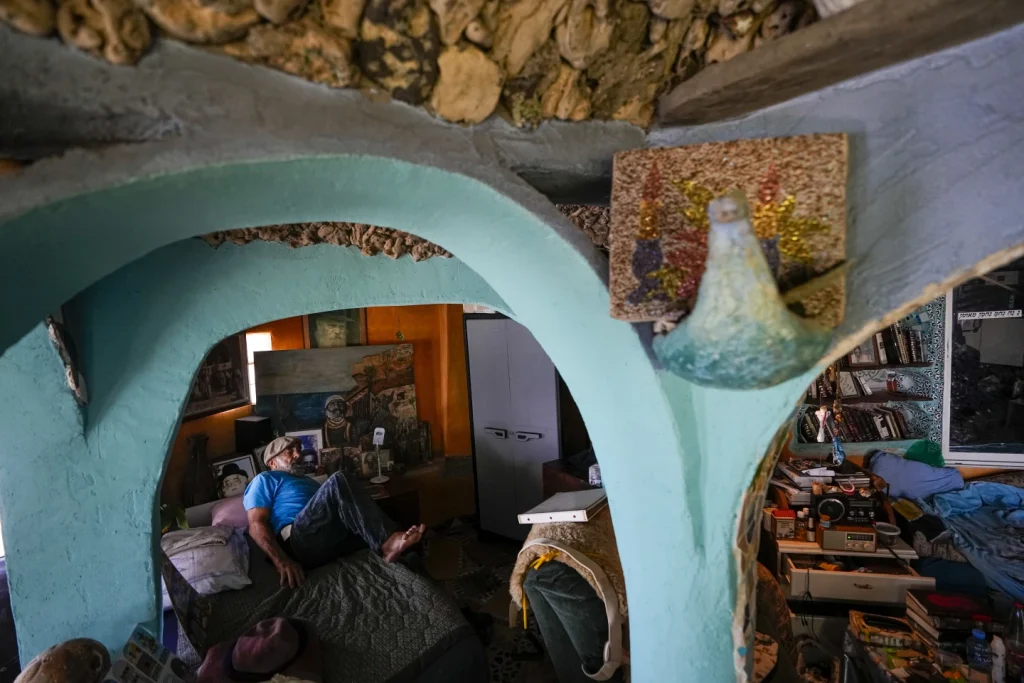
In the decades since, he says he has never heard any opposition from the authorities until last year when he was served with an eviction notice. The eviction is currently on hold until later this month to give him time to appeal.
Kahlon acknowledges that he never received a building permit and that city hall shut down a beachfront restaurant he opened years ago.
However, his main argument is that local authorities connected his cave to the electric grid decades ago. He insists that he is not leaving and is ready for them to bury him there. “I have nowhere to go, I have no other home,” he says.
Kahlon’s cave home stands in stark contrast to the luxury homes that dot much of the beachside town of Herzliya, one of the most exclusive addresses in a country with a dire housing crunch.
A few hundred meters north of his cave is a Crusader castle, the site of a battle between Richard the Lionheart and Saladin over 800 years ago, as well as an abandoned facility that once belonged to Israel Military Industries, a defunct government-owned arms maker.
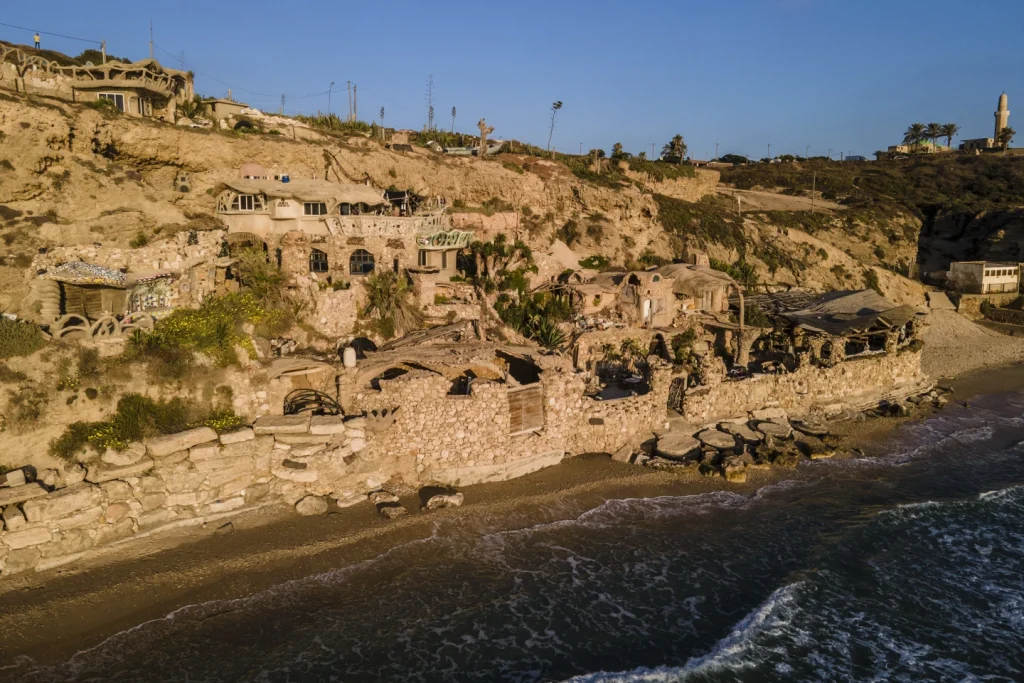
As the legal battle over Kahlon’s cave home continues, many are watching closely to see how it will be resolved. For Kahlon, it is not just a matter of having a place to live, but also a matter of preserving his way of life and his connection to the land.
The story of the abandoned explosives facility in Israel is one of neglect and blame-shifting. The site, where explosives were developed and tested, was left abandoned after a massive explosion in 1992 killed two workers and damaged hundreds of buildings.
Since then, various Israeli government authorities have accused each other of being responsible for cleaning up the derelict and polluted ground.
The Environmental Protection Ministry has conducted repeated surveys to assess the extent of the pollution, but a full-scale cleanup has not been done since the site was abandoned in the 1990s.
The Defense Ministry and IMI, which was taken over by defense contractor Elbit Systems five years ago, are responsible for security at the site.
However, the main gate remains wide open and is frequently the scene of rogue raves. The Environmental Protection Ministry claims that there weren’t supposed to be any remnants of live ammunition inside, but Kahlon’s recent explosion blew a massive crater in the sandy soil not far from his cave.
The ministry also accused Kahlon of causing significant damage to the cliff, endangering the public, and reducing the beach for public passage over the past 50 years.
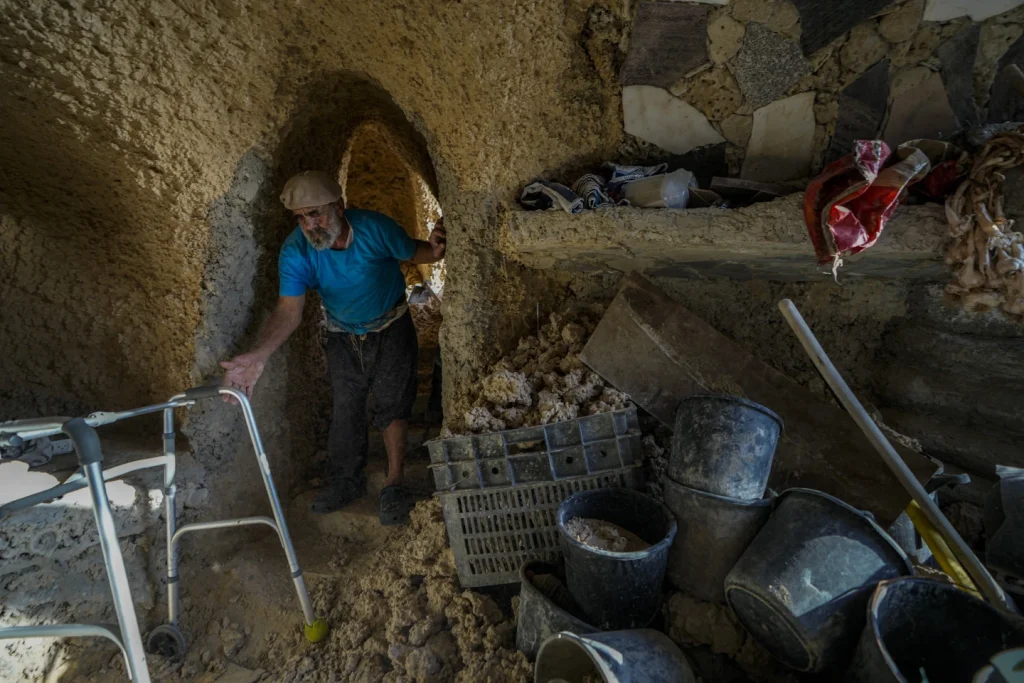
It says the recent explosion only increases the potential risk to the cliff. The Herzliya municipality and other authorities have failed to address the situation over the years, and the ministry claims it has tried since 2016 to resolve the issue.
In the end, the ministry issued an eviction order to remove the harm to the coastal environment. The Herzliya municipality has found alternative housing for Kahlon.
The story of this neglected site serves as a warning of the dangers of neglecting environmental cleanup efforts and passing blame between government authorities.
It is essential to take responsibility for our actions and work together to protect our environment for future generations.
Kahlon’s determination to pursue his life’s work is truly inspiring, even in the face of legal challenges. It’s heartening to see his friends and family rally around him by launching a crowdfunding campaign to support his legal defense.
Despite the setbacks he’s faced, Kahlon refuses to give up on his dreams and continues to work towards them.
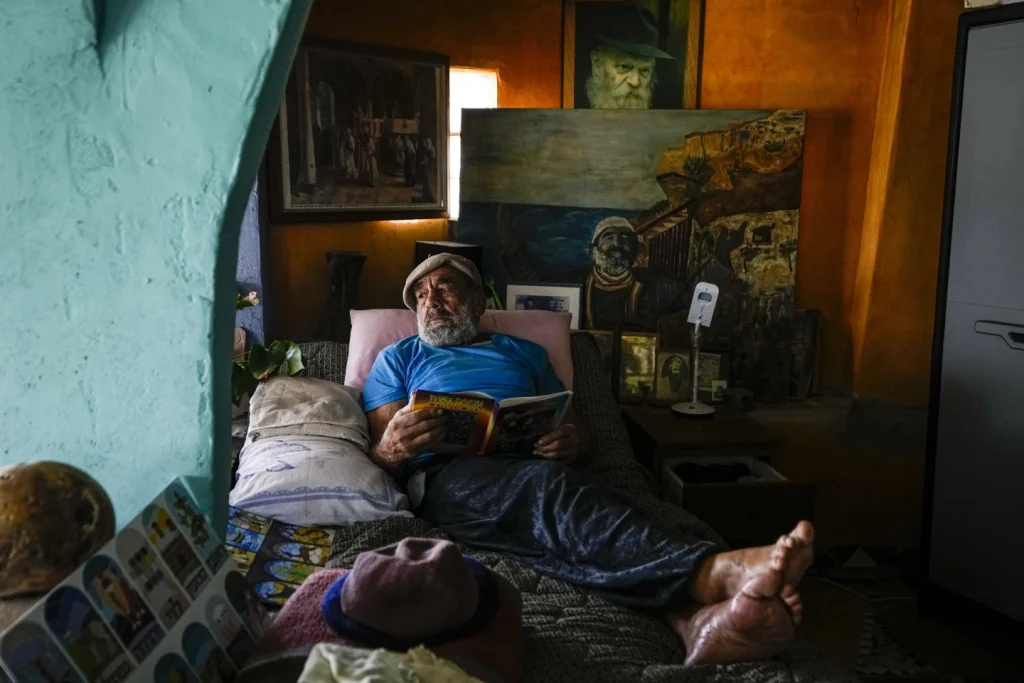
In a recent interview with The Associated Press, Kahlon demonstrated his resilience by picking himself up and getting back to work, using his walker and a mason’s hammer to chip away at a nearby tunnel.
He explained that he needed to do something to feel productive and engaged, rather than sitting around feeling sorry for himself.
Kahlon’s determination is a reminder that we should never give up on our passions, no matter how difficult the road may be.
With the support of loved ones and a steadfast commitment to our goals, we can overcome any obstacle and achieve great things.
